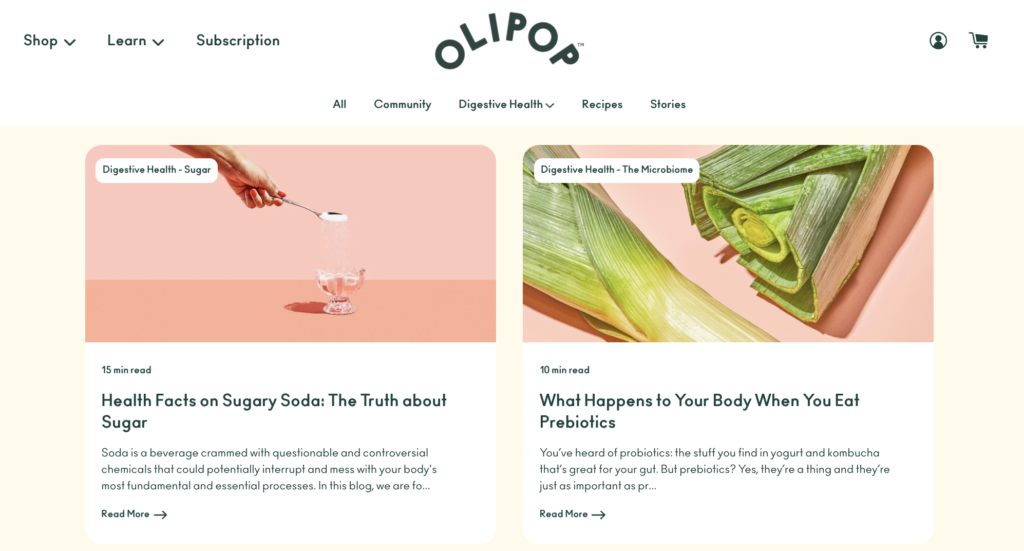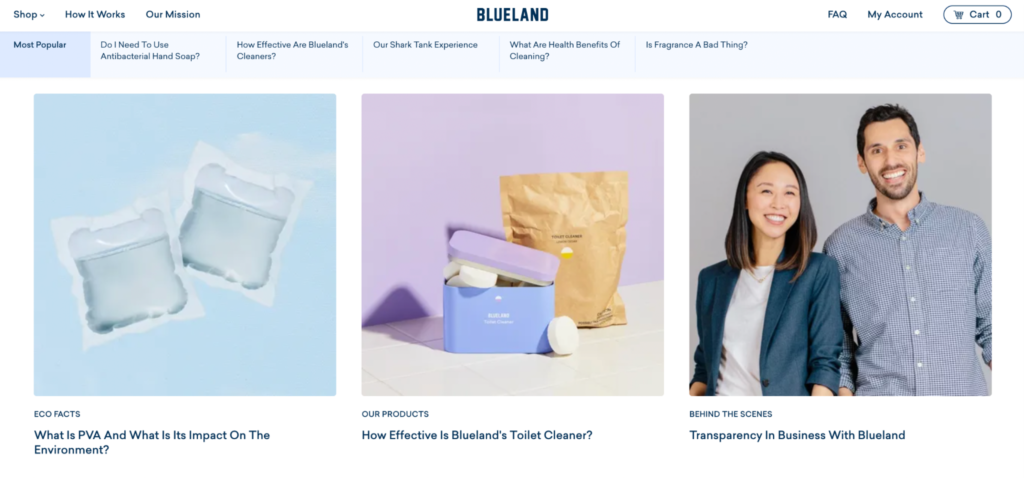When thinking about inbound marketing and forming a digital marketing strategy, two words often come to mind: company blog. Simply put, launching an official blog opens up a new line of communication between your customers (and potential customers) and your brand.
What does that mean for your business? For relatively low cost, your brand reap the rewards of increased brand awareness, lead generation, and customer trust. You can position your brand as a thought leader in your industry, increase traffic to your website, and foster stronger customer relationships. And your customers? Through your blog, they can receive value-adding content that helps them get more out of your products or services at no additional cost.
Seems like a no-brainer, right? Well, it all depends—on your blogging strategy, that is. In this post, we’ll dive into six key tactics top brands use to create best-in-class blogs so you can apply them to your own business.
Success strategies of the best company blogs
1. Know your audience.
It’s not enough just to produce content on your blog—anything you publish needs to be helpful content. The first crucial step here? Knowing your audience.
Make sure you understand not only what your current customers are interested in, but also what your potential customers are interested in. Research what they’re searching and what they’re buying, and learn more about any potential pain points they have. From there, you can go about creating content that contains relevant information for the people you’re trying to reach.
2. Showcase meaningful, relevant content for that audience.

Once you’ve pinpointed the groups you’re trying to reach, you can craft content around their interests and needs. This could mean posting relevant company news, like press releases, updates to your pricing, or details on a new product offering. But depending on your products and services, as well as your unique audience, that content could include a slew of other topics.
For example, a yarn brand might post an article about fun DIY projects that can be made with yarn to add value for their current customers and attract potential new ones. Fashion brands might offer key insights on the latest trends to position themselves as business leaders in their industry, increasing brand awareness and trust.
Many brands also use their blog to showcase educational content that allows their existing customers to get more out of their products. OLIPOP, a DTC prebiotic soda brand, is a perfect example of this. Their blog, OLIPOP Digest, offers educational content related to their sodas for readers who are looking to dig deeper into the brand’s focus on digestive health.

3. Optimize your blog for search engines—but always keep the human reader in mind.
SEO, or search engine optimization, plays a crucial role in a branded blog’s success. After all, if your posts are hard for readers to find via search engines, they may not be seen by your target audience at all—no matter how value-adding your content may be. Using keyword research, writing clear blog post titles, employing strategic internal linking, and adding in-article images are just a handful of the many ways you can optimize your blog posts for search.
But ultimately, your blog is for human readers, and your blog’s success depends on how useful your writing is for those human readers. In any SEO efforts you make, be sure that your copy is well-organized, clear, well-written, engaging, and digestible for your target audience. For example, use keywords strategically, when they make sense for your content and relate to your overall message. Great corporate blogs strike the right balance in this way—they ensure that their content not only reaches the right audience, but also is meaningful for that audience.
4. Integrate your blog content with your social media strategy.
Your blog content can be valuable fodder for your other channels, and social media is no exception. Strategically promoting certain blog posts on your social channels can help your content reach a wider audience. On the flip side, promoting already engaging content on your company’s social accounts can increase traffic to those channels, as well.
Of course, not every blog post is a fit for every social media channel. Certain posts may be better-suited for some channels than others. For example, depending on your audience, an article about ways to strengthen company culture in a remote work environment might be a better match for your LinkedIn followers than your Instagram followers. By posting strategically and being sure not to inundate your audience with irrelevant content, you can reinforce your status as a source of thought leadership.
Below are a few techniques to get readers clicking and engaging with your story on social media:
- If it fits your brand tone, embrace using emojis in your social media posts to catch your reader’s eye and pique their curiosity.
- Don’t bury the lede—tease the enticing parts of your story right away in your copy to hook readers’ attention.
- Tag any social handles of recognizable brands you featured in your blog post to boost your chances of engagement.
- Lead with your most impressive quote from the story at the top of your social post.
5. Keep your blog design and content consistent with your brand voice, style, and values.
The most successful blogs feel like an extension of a brand—one that adds value for readers while still feeling consistent in style and tone. After all, a blog is a continuation of a conversation between your brand and your customers, and your imagery, design, and word choice should still feel like “you”—even if they are slightly different from your tone on your website, emails, or other channels.
Your blog can also be an excellent opportunity to expand on your company values and create content around them. This type of content can be especially meaningful for members of your audience who identify with your company mission.

6. Analyze your content’s performance and refine your approach over time.
As you produce content for your blog, it’s important to analyze its performance over time. Determining the topics your audience is most interested in and identifying which posts receive the highest engagement can help you hone and refine your approach. This can even inform business processes like product development, helping you assess your audience’s interest in new categories.
Over time, your audience may change, as may the types of content they are interested in. Your blog can be a valuable resource for keeping a pulse on these changes, ensuring that you stay relevant and tuned in to your readers’ interests and priorities.
Successful brand blogs are a conversation—not one-way noise
Whether you’re blogging to add value for your existing customers or attract new ones to your business, your blog is a conversation between your brand and your audience. Use it to tell real stories, share valuable tips for using your products, and provide industry insights that deepen your customer relationships.
Remember: Blogging isn’t a tool to be dusted off every few months, then hung back up on the shelf. Ensure your blog is regularly updated with valuable content for your audience, and consistent effort, you can create a community of engaged readers.
No matter what strategies you choose, make sure that your content is relevant to the specific people you’re trying to reach, and that it changes with that audience over time. After all, any great conversation starts with listening—and this one is no exception.



